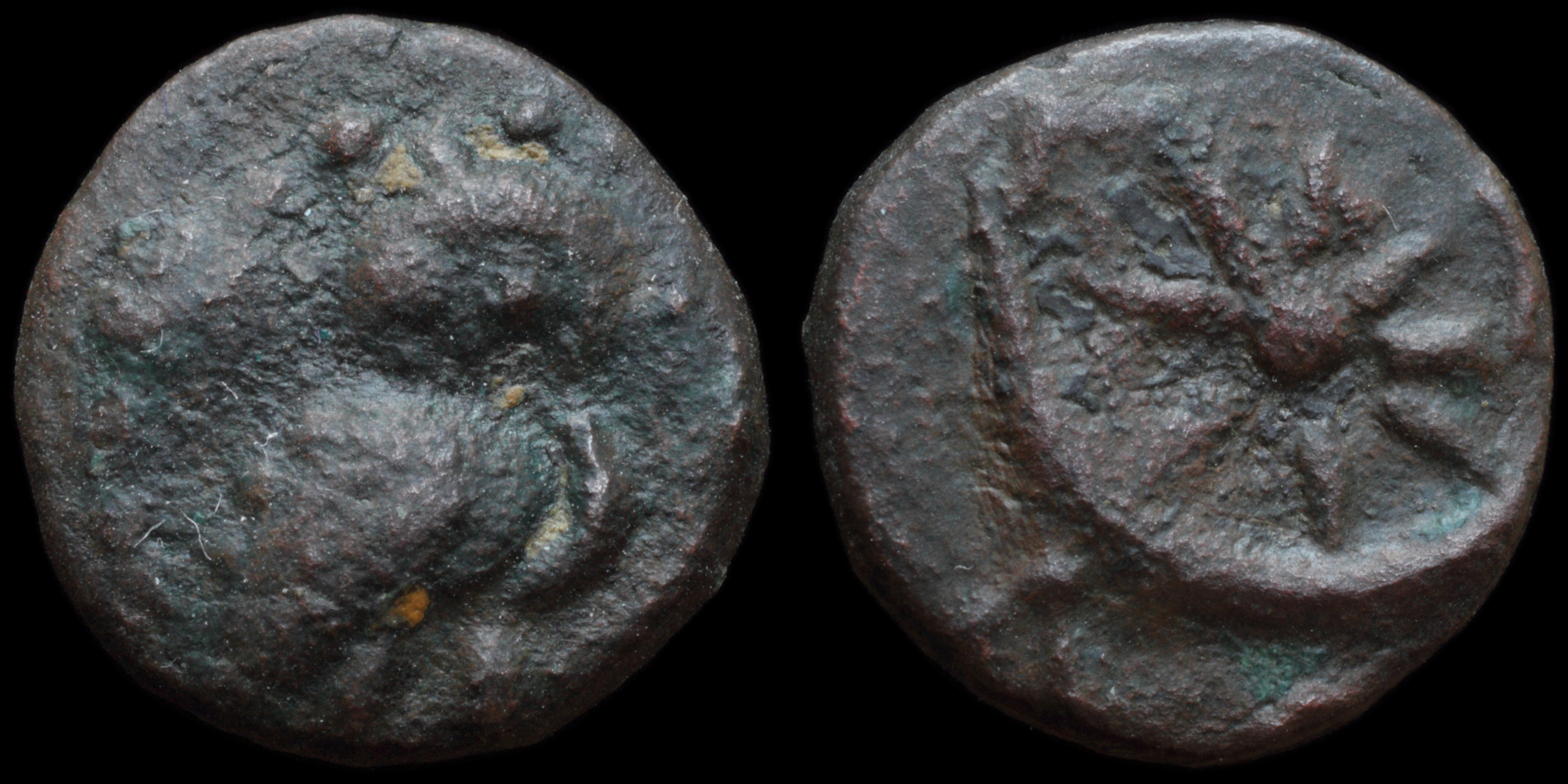Kydonia or Cydonia was an ancient city-state on the northwest coast of the island of Crete. It is at the site of the modern-day Greek city of Chania. In legend Cydonia was founded by King Cydon, a son of Hermes or Apollo and of Akakallis, the daughter of King Minos. According to Pausanias he was son of king Tegeates. Diodorus Siculus mentions that the city was founded by King Minos.
The name of the city is first mentioned in Linear B tablets from Knossos. Scarce finds such as walls and ground floors confirm that the systematic habitation of the hill began during Early Minoan (EM) II period.
Herodotus considers that the city was founded by Samians in ca. 520 BC, who later on were defeated and enslaved by a coalition of Aeginetans and Cretans. Aegina also sent colonists to the Cretan city. Due to this relationship, the city at an early phase minted coins which resemble those of the aforementioned island. Archaeological evidence from these periods is limited. In 429 BC, during the Peloponnesian War, Kydonia was attacked by the Athenians after the accusations of Nikias from Gortyna for pro-Spartan policy. In 343 BC the city was besieged by Phalaikos and his army of mercenaries after his failed attempt to capture Lyttus. He was killed from a lightning strike that burnt his siege engines.
In the Hellenistic period times Kydonia took part in the struggle for domination among the cities of Crete. At the end of the 3rd century BC a peace treaty with Aptera was signed. During the Lyttian War In 220/219 BC both cities joined the alliance of Oreioi (in which Polyrrhenia was a member) and canceled the one with Knossos. Aggressive policy led to the capture of Phalasarna (184 BC) and 14 years later that of Apollonia, an action criticized by Polybius since they were allies.
In 69 BC the Romans under Quintus Caecilius Metellus Creticus, after the failed attempt of Marcus Antonius Creticus, invaded Crete. The Cretan general Lasthenes confronted them in the battle of Kydonia, where he lost and retreated. This outcome forced Cretan general Panares to capitulate to the Romans and deliver them the city without resistance. The coins of the city-state depict Kydon either as an infant suckling a female Cretan hound or as an archer stringing his bow, accompanied by his dog.
The name of the city is first mentioned in Linear B tablets from Knossos. Scarce finds such as walls and ground floors confirm that the systematic habitation of the hill began during Early Minoan (EM) II period.
Herodotus considers that the city was founded by Samians in ca. 520 BC, who later on were defeated and enslaved by a coalition of Aeginetans and Cretans. Aegina also sent colonists to the Cretan city. Due to this relationship, the city at an early phase minted coins which resemble those of the aforementioned island. Archaeological evidence from these periods is limited. In 429 BC, during the Peloponnesian War, Kydonia was attacked by the Athenians after the accusations of Nikias from Gortyna for pro-Spartan policy. In 343 BC the city was besieged by Phalaikos and his army of mercenaries after his failed attempt to capture Lyttus. He was killed from a lightning strike that burnt his siege engines.
In the Hellenistic period times Kydonia took part in the struggle for domination among the cities of Crete. At the end of the 3rd century BC a peace treaty with Aptera was signed. During the Lyttian War In 220/219 BC both cities joined the alliance of Oreioi (in which Polyrrhenia was a member) and canceled the one with Knossos. Aggressive policy led to the capture of Phalasarna (184 BC) and 14 years later that of Apollonia, an action criticized by Polybius since they were allies.
In 69 BC the Romans under Quintus Caecilius Metellus Creticus, after the failed attempt of Marcus Antonius Creticus, invaded Crete. The Cretan general Lasthenes confronted them in the battle of Kydonia, where he lost and retreated. This outcome forced Cretan general Panares to capitulate to the Romans and deliver them the city without resistance. The coins of the city-state depict Kydon either as an infant suckling a female Cretan hound or as an archer stringing his bow, accompanied by his dog.
Modern location: Chania, Greece

